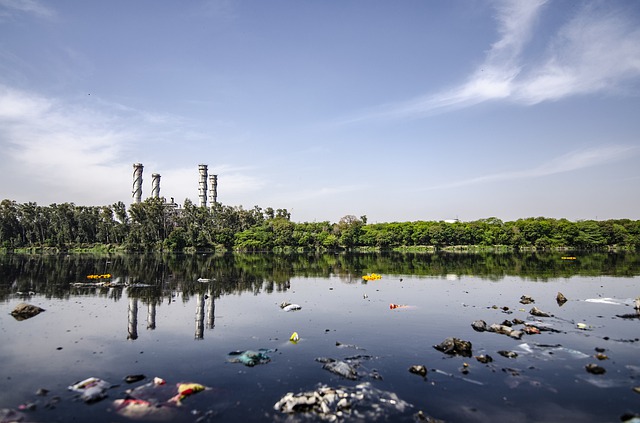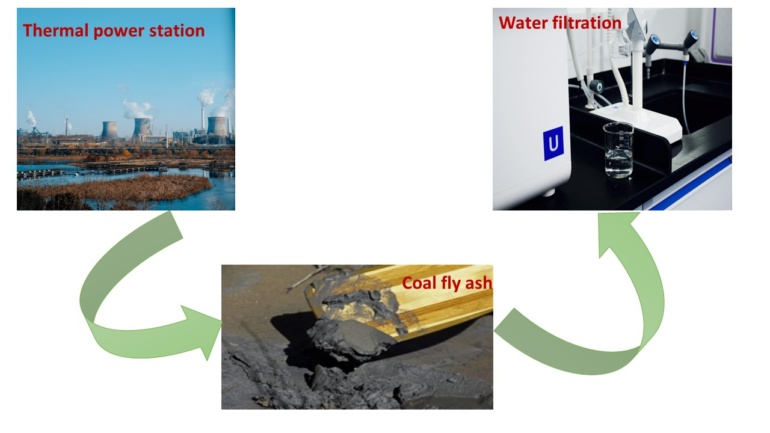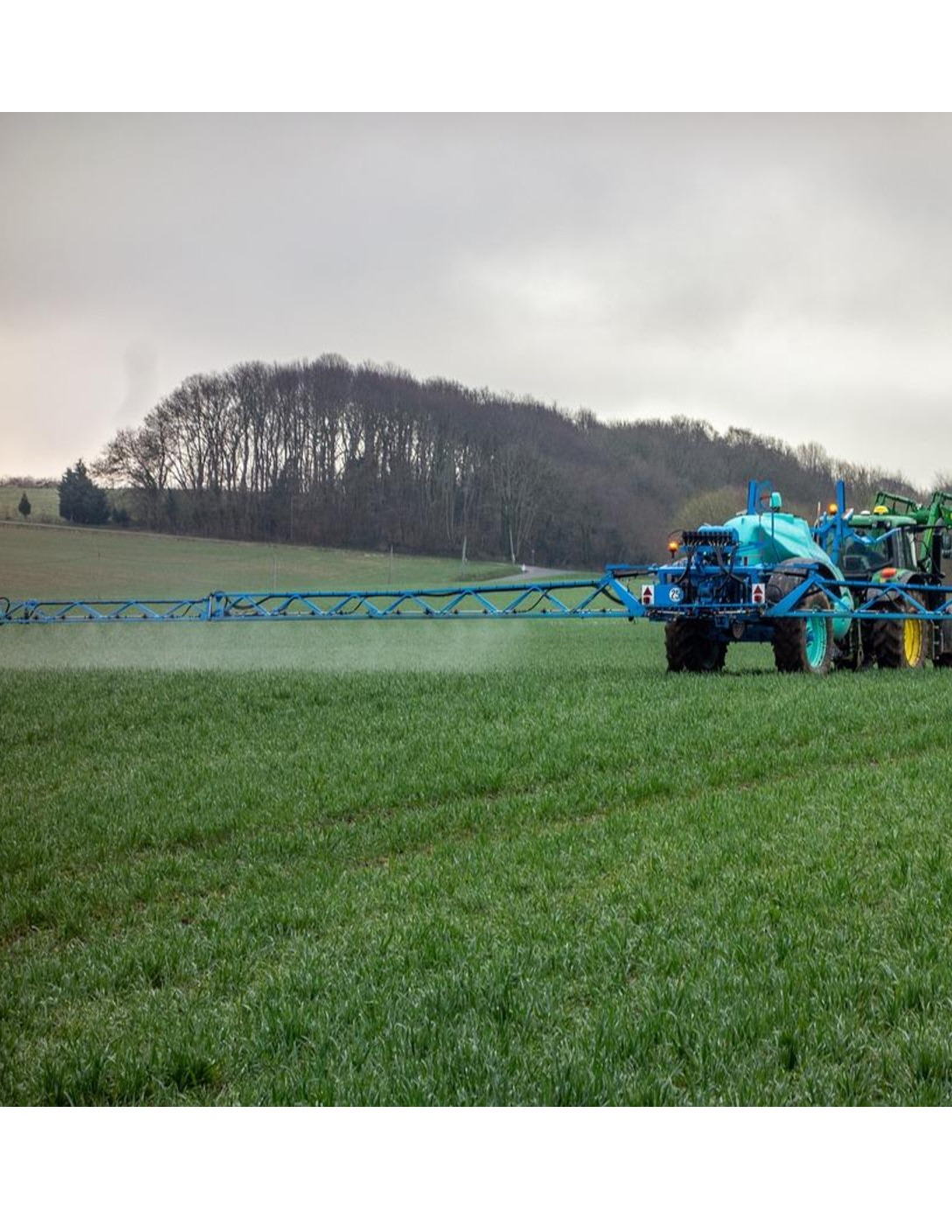By Kimberly Sung, Associate Director of Education for Save the Water | December 15th, 2016
In recent years, harmful bacteria like Escherichia coli (E. coli) and Listeria monocytogenes (Listeria) have been responsible for high-profile outbreaks of illness and even death. Though cases of infection often arise from food sources, further investigation reveals contaminated water as the chief vehicle in accelerating widespread infection. Currently, water treatment plants (WTPs) and food manufacturers use powerful chemical disinfectants to prevent the spread of pathogens. However, in the presence of certain organic compounds, these chemicals can form disinfection byproducts (DBPs) that are harmful to both human health and the environment. These risks prompt the need for alternative technologies that are sustainable, eco-friendly, and just as effective as their predecessors.
In September, Dr. David Wendell and his team of researchers at the University of Cincinnati revealed a groundbreaking water treatment technology that may be the perfect alternative. Their StrepMiniSog‒antibody (SMS‒antibody) system is a customizable protein-based photocatalyst that can selectively “seek-and-destroy” pathogens using just light. This discovery has the potential to change not only the way we disinfect our water sources, but also how we react to threats of outbreak.1
Outbreaks of foodborne illness stem from water contamination
The O157:H7 strain of E. coli is responsible for 73,000 annual cases of illness in the United States.9 It is commonly transmitted through contact with human and animal waste. In severe cases, exposure can lead to gastrointestinal infection, hemorrhagic diarrhea, and vomiting. In 2006, an outbreak of E. coli O157:H7 infections was linked to the Dole brand’s fresh spinach, bagged in California. The incident affected 26 states and caused 205 confirmed cases of illness and 3 deaths.2,3 The Centers for Disease Control and Prevention (CDC) concluded that the source of exposure was fecal matter from a nearby cattle and pig farm that contaminated groundwater stores used for irrigating the spinach.4
Though exposure to Listeria is rarer than E. coli, infection from Listeria (called listeriosis) is more deadly. This bacteria is responsible for an estimated 1,600 annual cases, 260 of which lead to death.5 Listeriosis can cause fever, gastroenteritis, vomiting, and in severe cases, infections of the central nervous system like meningitis. It can even be transmitted from infected mother to fetus. In 2011, a Listeria outbreak was linked to cantaloupes grown on a Jensen Farm in Colorado. The incident affected 28 states and caused 147 confirmed cases of illness and 33 deaths.6,7 The Food and Drug Administration (FDA) concluded that Listeria was transmitted to the cantaloupes through dirty machinery and pools of contaminated water close to packing equipment.3
Chemical disinfectants are effective, but are flawed
To minimize the risk of outbreak, quick and efficient measures need to be employed right at the moment of detection. The most common method of eliminating pathogens is through chemical disinfectants like chlorine. Water treatment plants use this approach because it is fast and highly effective. In the food industry, chlorinated water is used to similarly disinfect the surfaces of food products such as fruits, vegetables, poultry, nuts, and eggs. Additionally, chlorine-containing chemicals are used to clean work surfaces to avoid bacterial growth and cross-contamination of products.8
Although chemical disinfectants are effective in removing pathogens, they are flawed. These chemicals are broad-spectrum disinfectants that kill microorganisms indiscriminately. This measure is too effective and also kills beneficial organisms like those used in biofilters, which remove organic matter in water treatment processes. Furthermore, residual disinfectants left in our water supply as a preventative measure are at risk of forming harmful DBPs like trihalomethanes, which are known to increase risks of cancer and to damage the liver, kidneys, and central nervous system. DBPs are also a concern in the food industry, but the types, quantities, and impacts are difficult to predict because the chemical composition of food is much more complex than that of water.8 These concerns, as well as their negative impacts on human health and the environment, elicit a need for better alternatives.
New water treatment technology is renewable, biodegradable, and efficient
Wendell’s SMS‒antibody system is an elegant design. The system is outfitted with targeting antibodies that help guide the photocatalyst to the pathogen of interest. Then, all it takes is blue-colored light to trigger a cascade of reactions that directly deliver toxic hydrogen peroxide to the pathogen. So far, they have demonstrated this technology for two types of bacteria: E. coli and Listeria. Their studies show that they can remove 54% of E. coli after 90 minutes of light exposure and 80% of Listeria after 30 minutes of light exposure.1
The system is an ideal alternative because it is renewable–the targeting antibodies can be removed and replaced using well-established methods. It is biodegradable–digestive enzymes in the human gut can easily break down the protein. And it is efficient–it can be customized to selectively disinfect a pathogen in a direct, targeted fashion. From a mixture of E. coli and Listeria, they show that a system customized to target Listeria will only kill Listeria. These results suggest that in large-scale applications, less material than traditional disinfectants would be necessary to remove unwanted pathogens.1
This technology inspires endless possibilities. Wendell states, “In the environment or engineered water treatment systems there are many bacteria that you want to preserve…We need a disinfectant that can ignore helpful bacteria while neutralizing pathogens responsible for sporadic outbreaks…By using a selective approach we can preserve existing microbiomes, which makes them more resistant to opportunistic pathogens.”10
When will we see this technology in operation?
Wendell and his team are still determining the full potential of this technology. Their study reports successful disinfection of E. coli and Listeria. However, there are several other pathogens that extend beyond these bacteria. Viruses like Enteroviruses and Hepatitis A, as well as protozoa like Cryptosporidium and Giardia, also risk human health. They believe their technology can be applied to viruses and protozoa, but its efficacy is still unknown. Wendell also believes that this technology can be commercialized in less than five years.10 The National Science Foundation supports Wendell’s confidence and awarded him with the prestigious CAREER Award. The honor comes with a $500,000 grant to develop a way to mass produce his pathogen-targeting technology.
References
- E.M. Wurtzler & D. Wendell. 2016. “Selective Photocatalytic Disinfection by Coupling StrepMiniSog to the Antibody Catalyzed Water Oxidation Pathway.” PLoS ONE 11(9): e0162577. doi:10.1371/journal. Pone.0162577.
- Food and Drug Administration. October 19, 2011. “Environmental Assessment: Factors Potentially Contributing to the Contamination of Fresh Whole Cantaloupe Implicated in a Multi-State Outbreak of Listeriosis.” http://www.fda.gov/Food/RecallsOutbreaksEmergencies/Outbreaks/ucm276247.htm
- Food and Drug Administration. March 23, 2007. “FDA Finalizes Report on 2006 Spinach Outbreak.” http://www.fda.gov/NewsEvents/Newsroom/PressAnnouncements/2007/ucm108873.htm
- R. J. Gelting, et al. 2011. “Irrigation water issues potentially related to the 2006 multistate E. coli O157:H7 outbreak associated with spinach.” Agricultural Water Management, 98(9), 1395-1402. doi:10.1016/j.agwat.2011.04.004.
- Center for Disease Control and Prevention. August 18, 2016. “Listeria.” https://www.cdc.gov/listeria/
- Center for Disease Control and Prevention. 2006. “Multistate Outbreak of E. coli O157:H7 Infections Linked to Fresh Spinach.” https://www.cdc.gov/ecoli/2006/spinach-10-2006.html
- Center for Disease Control and Prevention. 2012. “Multistate Outbreak of Listeriosis Linked to Whole Cantaloupes from Jensen Farms, Colorado.” https://www.cdc.gov/listeria/outbreaks/cantaloupes-jensen-farms/
- Food and Agriculture Organization of the United Nations and World Health Organization. 2009. “Benefits and Risks of Chlorine-containing Disinfectants in Food Production and Food Processing: Report of a Joint FAO/WHO Expert Meeting, Ann Arbor, MI, USA, 27-30 May 2008.” Geneva, Switzerland: WHO Document Production Services.
- J.M. Rangel, et al. 2005. “Epidemiology of Escherichia coli O157:H7 Outbreaks, United States, 1982–2002.” Emerging Infectious Diseases, 11(4), 603-609. doi:10.3201/eid1104.040739.
- J. Bach. October 5, 2016. “UC Researcher Develops Clean Water-Treatment Option to Target Sporadic Outbreaks.” UC Magazine. http://magazine.uc.edu/





